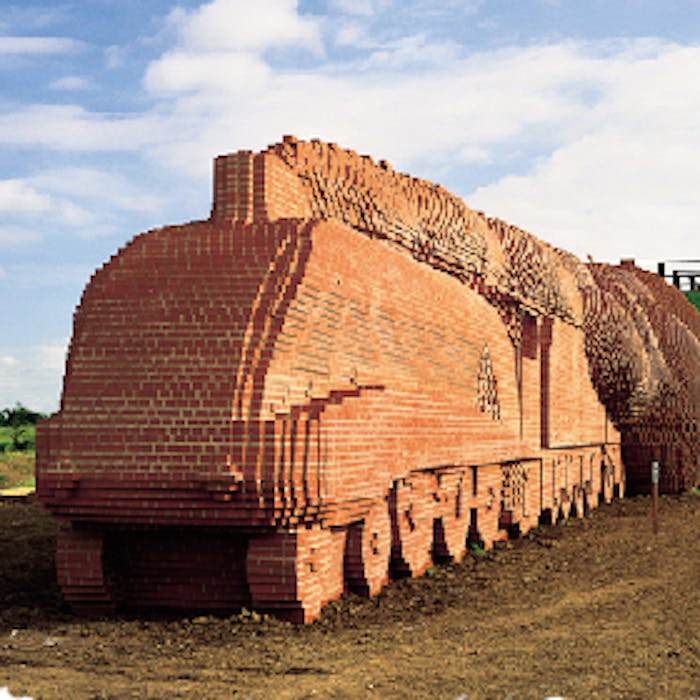
Darlington's Brick Train - a celebration of steam locomotion
On the outskirts of Darlington, in the county of Durham, is an amazing sculpture of a locomotive made entirely of bricks. More than twenty years after it was unveiled, the Brick Train remains a beloved local landmark.
The sculpture was created by David Mach in 1997 to celebrate the town's railway heritage, and is modelled on the steam locomotive Mallard, which set a UK rail speed record of 126 miles per hour (203 km/h) in 1938. The locomotive is depicted as if just having exited a tunnel, with the billowing smoke typical of such an exit.
Funded by the National Lottery, Wm Morrison Supermarkets, Northern Arts, Department of National Heritage, Darlington Borough Council and headed by sculptor David Mach the project reputedly cost c £760k.
A total of 185,000 bricks were used in its construction along with 170 cubic metres of concrete. The train weighs 15,000 tonnes and covers an area of 600sq metres. It is of hollow construction and measures 23ft high by 130ft long. It took a team of 34 brick layers, labourers and apprentices 21 weeks to build.
In addition, there are even 20 special ‘bat’ bricks built in at various places to encourage the nocturnal creatures to use it as their home. Local schools also donated ‘time capsules’ which were put inside the train.
Darlington's rail heritage partially stems from the fact that the Stockton and Darlington Railway was the world's first public railway to use steam locomotives. There are plans to develop Darlington Railway Heritage Quarter into a new world class visitor attraction and museum by 2024 so that it can be a central part of the bi-centenary celebrations of the Stockton and Darlington Railway in 2025.
Further reading
Links to external websites are not maintained by Bite Sized Britain. They are provided to give users access to additional information. Bite Sized Britain is not responsible for the content of these external websites.
